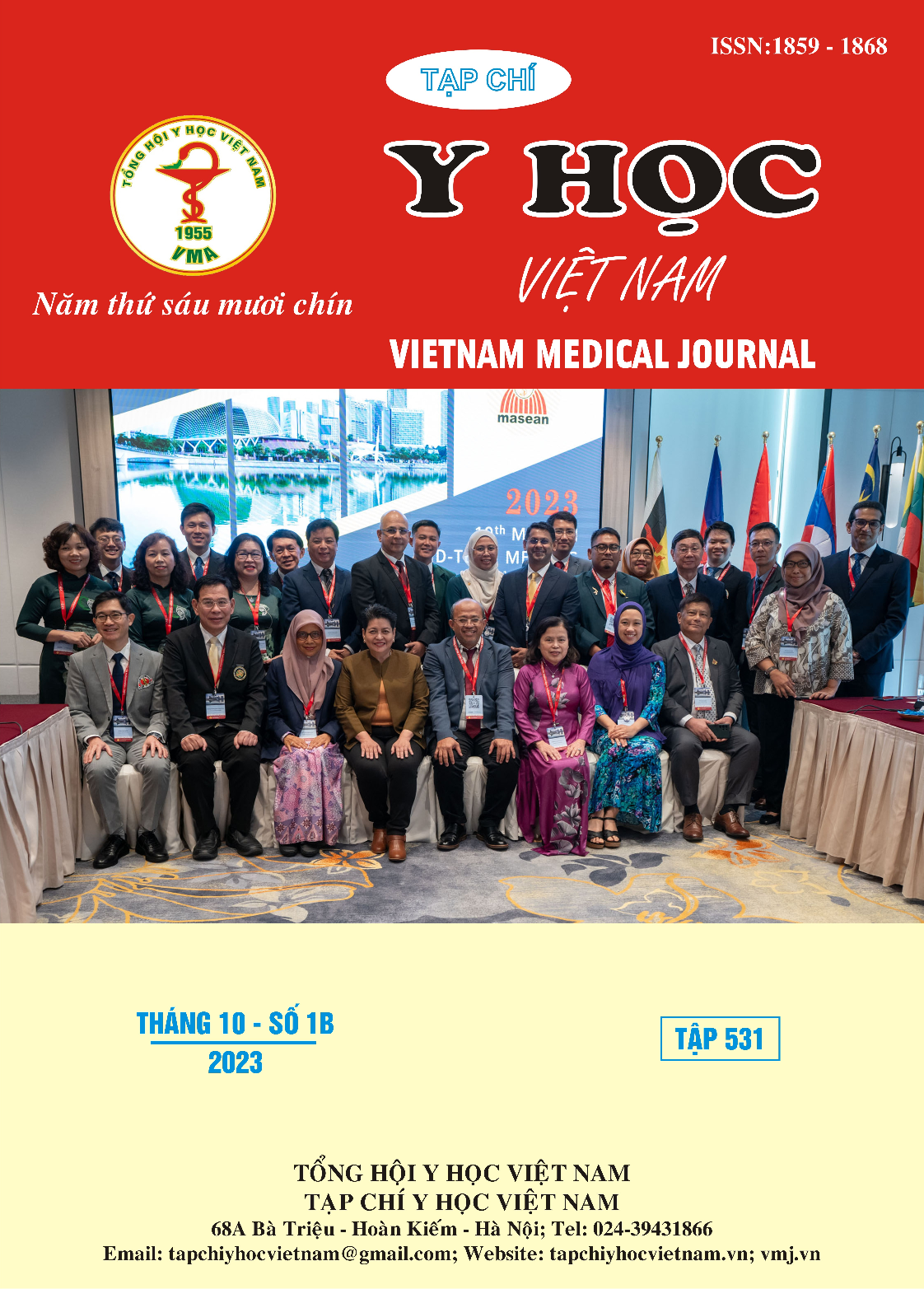CLINICAL FEATURES AND OUTCOME OF CEREBRAL INFARCTION WITH CAROTID OCCLUSION PATIENTS IN THE FIRST 30 DAYS AT BACH MAI HOSPITAL IN 2023
Main Article Content
Abstract
Objective: To describe the clinical features and outcome of cerebral infarction with carotid occlusion patients in the first 30 days at Bach Mai hospital in 2023. Subjects and methods: Descriptive case series of 37 ischemic stroke patients with ipsilateral carotid artery occlusion, hospitalized at the Neurology Department in Bach Mai Hospital from Jan 2023 to Aug 2023. Results: The mean age in our series was 66.6 ± 10.3; the oldest was 86 years old, and the youngest was 42 years old. The male/female ratio was 3.6/1. The hypertension rate was 70.3%; the hyperlipidemia rate was 59.5%; there were three patients with other cardiovascular diseases; the diabetes rate was 18.9%. The mean baseline Glasgow Coma Scale score was 13.8 ± 1.5 points. The mean baseline NIHSS score was 16.2 ± 8.4 points. The mean Modified Rankin Scale after 30 days was 3.8 ± 1.6. The mortality rate was 16.2%. Conclusion: Cerebral infarction with carotid occlusion is a rare disease with various clinical symptoms from mild, moderate, severe to very severe. The poor 30-day outcome with the mortality rate was high.
Article Details
Keywords
cerebral infarction with carotid occlusion, 30-day outcome, mRS.
References
2. Adams RD, Ropper AH, Brown RH, (2005), “Cerebrovascular disease”, Adams and Victor’s Principles of Neurology, McGraw-Hill, 8th ed., pp. 660- 746.
3. Powers WJ, Derdeyn CP, Fritsch SM, Carpenter DA, Yundt KD, Videen TO, and Grubb RL, (2000), “Benign prognosis of never-symptomatic carotid occlusion”, Neurology, 54; pp. 878-882.
4. Nguyễn Bá Thắng (2015), Khảo sát các yếu tố tiên lượng của nhồi máu não do tắc động mạch cảnh trong, Luận án tiến sĩ y học, Đại Học Y Dược TPHCM.
5. Lê Nguyễn Nhựt Tín (2000), Phân loại nguyên nhân đột quỵ nhồi máu não – khảo sát tiền cứu 104 trường hợp, Luận văn tốt nghiệp bác sĩ nội trú, Đại Học Y Dược TPHCM
6. Paciaroni M, Balucani C, Agnelli G, et al, (2012). Systemic Thrombolysis in Patients With Acute Ischemic Stroke and Internal Carotid ARtery Occlusion. The ICARO Study. Stroke; 43:125-130.
7. Powers WJ, Clarke WR, Grubb RL, Videen TO, Adams HP, Derdeyn CP, for the COSS Investigators, (2011). Extracranial-Intracranial Bypass Surgery for Stroke Prevention in Hemodynamic Cerebral Ischemia: The Carotid Occlusion Surgery Study: A Randomized Trial. JAMA; 306(18): 1983–1992.
8. Weimar C., Goertler M., Harms L., Diener H.C., for the German Stroke Study Collaboration, (2006). Distribution and Outcome of Symptomatic Stenoses and Occlusions in Patients With Acute Cerebral Ischemia. Arch Neurol; 63:1287-1291.


